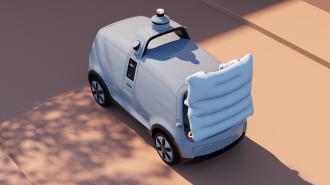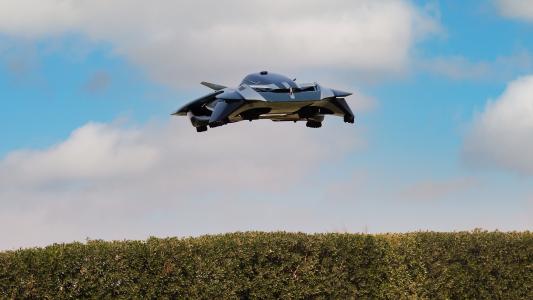Autonomous vehicle maker Nuro has added external airbags to its self-driving delivery robots to protect pedestrians — but there’s reason to be skeptical about their effectiveness.
Drivers wanted: During the pandemic, more people started ordering their food, groceries, and other goods for delivery rather than venturing into stores and restaurants for them.
This has led to an increased demand for delivery drivers that companies have had trouble meeting.
“There is no store in the country right now with enough delivery drivers,” Dennis Maloney, chief digital officer at Domino’s Pizza, told AP News in November 2021.
“[The airbag] is optimized to reduce the force of impact and number of injuries in the event of collision.”
Nuro
The challenge: Domino’s is now one of several companies testing the ability of autonomous delivery robots to meet delivery demand — these robots can be loaded up with food or goods and then directed to carry them to a person’s doorstep for unloading.
Before delivery robots can be deployed en masse, though, developers need to ensure they can safely share streets and sidewalks with people — and thus far, that hasn’t always been the case.
What’s new: On January 12, the company unveiled its third-generation delivery robot, also called Nuro. The robot is designed to operate on streets and is about 20% narrower than the average passenger car.
The new model includes a number of upgrades — double the cargo volume, temperature-controlled compartments, etc. — but one of the most eye-catching is an external airbag that’s “optimized to reduce the force of impact and number of injuries in the event of collision,” according to a Nuro blog post.
Hot air? The delivery robot’s external airbag is certainly unique, but it’s hard to say how effective it is at minimizing injuries — if Nuro did any crash testing, it has yet to share the results of the tests.
Airbags in cars protect passengers by deploying after the vehicle has already hit something but before a person’s forward momentum carries them into the dashboard.
Nuro’s airbag would seemingly need to deploy before a collision happened — it’s possible the delivery robot’s robust camera and sensor package is able to detect an imminent crash, but again, Nuro hasn’t made that clear.
Ultimately, while it is encouraging that Nuro is thinking about pedestrian safety, it’s too soon to say whether the airbag will actually make a difference in the event of any collision — especially if a person is hit at the new model’s top speed of 45 miles per hour.
We’d love to hear from you! If you have a comment about this article or if you have a tip for a future Freethink story, please email us at [email protected].






